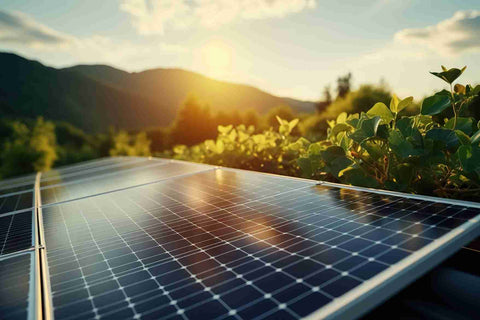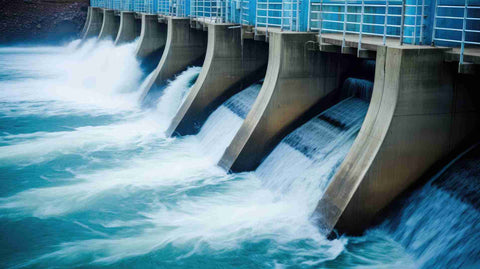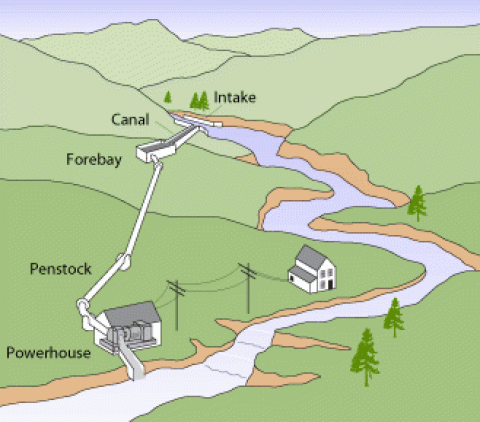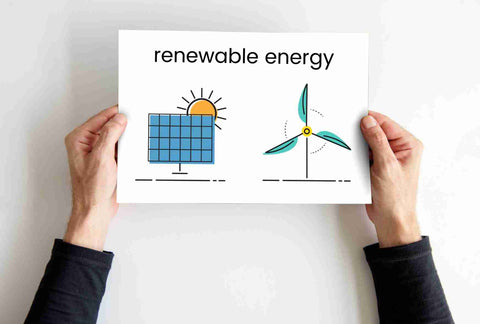Renewable Energy Solutions Guide for Self-Sufficiency
Introduction: Understanding Renewable Energy For Self-Sufficiency
The journey towards a sustainable and self-sufficient energy future is anchored in the shift from traditional, finite energy sources to renewable energy.
This initial step into renewable energy sheds light on what it is, why it's essential, and how it serves as a cornerstone for environmental sustainability and energy independence.
Defining Renewable Energy
Renewable energy, also known as clean or green energy, is derived from natural processes that are replenished at a rate faster than they are consumed.
Unlike finite energy sources that can deplete over time, renewable energy sources are virtually endless and play a crucial role in reducing carbon footprints, combating climate change, and promoting energy self-sufficiency.
- Nature's Power: Harnessing the sun's rays, the force of wind, the flow of water, the heat beneath the Earth (geothermal), and the energy stored in biomass (organic materials), renewable energy offers diverse ways to generate power and heat.
- Sustainable and Ever-present: Natural processes constantly renew these sources, making them a sustainable choice for a long-term energy solution. They provide a reliable and scalable alternative to fossil fuels, potentially meeting global energy needs without degrading the environment.
- Versatile Applications: Renewable energy technologies have broad applications, from generating electricity and heating buildings to powering vehicles and supporting industrial processes. This versatility makes renewable energy a key player in achieving energy independence and sustainability.
Environmental and Economic Benefits
The pivot to renewable energy is not merely an environmental consideration but also economically advantageous. By leveraging natural, renewable sources, we can significantly reduce greenhouse gas emissions, diminishing the impact of energy production on climate change.
Furthermore, diversifying energy supplies with renewables reduces dependence on imported fuels, fostering economic growth by creating jobs in the renewable sector.
Path to Energy Self-Sufficiency
Energy self-sufficiency is meeting energy needs without relying on external or non-renewable sources.
This independence is crucial for both national security and environmental sustainability.
- From Dependence to Independence: Transitioning to renewable energy reduces reliance on fossil fuels, which are harmful to the environment and subject to volatile markets. Renewable energy offers a pathway to energy autonomy, empowering individuals, communities, and nations to generate clean, sustainable power.
- Cost-Effectiveness and Savings: The initial investment in renewable energy technologies can be offset by the significant savings in energy costs over time. Moreover, the decreasing cost of renewable technologies, such as solar panels, makes this transition increasingly accessible and economically viable for many users.
In essence, renewable energy is a pillar of sustainability and self-sufficiency, offering a cleaner, more sustainable path forward.
It represents a fundamental shift in how we produce and consume energy, moving towards a future that generates energy in harmony with nature, securing a healthier planet for future generations.
IN THIS ARTICLE, we will talk about the different types of renewable energy, such as solar energy solutions, wind energy basics, hydropower for home use, biomass energy solutions, and geothermal energy at home.
We will also explore integrating renewable energy systems and their respective considerations.
Chapter 1: Solar Energy Solutions
Solar advancements convert daylight into electrical energy through photovoltaic (PV) boards or mirrors concentrating solar radiation.
This is one of the renewable energy technologies that can be used to produce power or put away in batteries or warm stockpiling. This energy can be used to produce electricity or be put away in batteries or warm stockpiling.
There are seven critical components in a home's solar system:
1. Solar Photovoltaic Panels

A solar photovoltaic (PV) panel is a gadget that can change sun-oriented energy straightforwardly to power.
Nonetheless, nuclear power gathering in solar panels unavoidably expands its temperature, prompting a lessening in PV proficiency, which is currently low.
If you don't have the opportunity or ability to construct a sun-powered charger without any preparation, there are a lot of monetarily accessible boards to browse.
When completed, individual boards are wired together to make more extensive sunlight-based exhibits.
2. Solar Power System Disconnects
A sun-oriented power framework detaches are fundamentally only an electrical switch; however, it is a significant piece of the framework.
It permits you to disengage and remove the DC power yield from your sunlight-based chargers and exhibit should any fixes be required or, on the other hand, if there is an issue with the nearby planet group.
This distinction change should be sufficiently able to deal with the total power yield from the boards on a brilliant, bright day.
3. Battery Charge Controller or Regulator
While there are a few solar charge controllers, the three most normal are Maximum Power Point Tracking (MPPT), Pulse Width Modulation (PWM), and Simple 1 or 2 Stage Controllers.
The battery charge regulator guarantees that a reliable measure of electrical power is shipped off the batteries so they are not overcharged.
It ensures that the reinforcement batteries don't release back through the framework around evening time.
4. Deep Cycle Battery Storage
A deep-cycle battery stores power and delivers a consistent current after some time.
Unlike a vehicle battery, which delivers a fast eruption of energy to start, a deep cycle battery is utilized when you require a supported energy current — to drive domestic devices throughout the day, for instance.
5. System Power System Metering
Metering Systems precisely record the progression of power to or from a site. Metering System information is utilized to ascertain energy awkwardness charges.
Having a framework influence meter likewise assists you with working on your framework to acquire the most significant proficiency from your sun-oriented establishment and enjoying the benefit of telling your neighbors how much cash your nearby planet group is saving.
6. Solar Power System Inverter
In commonsense terms, the inverter permits you to run electric drills, PCs, vacuum cleaners, mains lighting, and most different mains electrical apparatuses connected to the wall attachments of your sunlight-powered chargers.
Many square waves are sine wave changed wave inverters available today; however, a decent quality 1200W sine wave inverter won't set you back over two or three hundred bucks.
7. Backup Power
Back power might be expected when the sun doesn't sparkle and the stockpiling batteries are unfilled.
Most frameworks will incorporate some reinforcement power. In an independent establishment, this would commonly be a diesel generator.
In any case, a reinforcement power source can likewise be a breeze turbine or a water wheel as a component of a limited-scale hydro framework.
For DIY solar projects for small-scale and home systems:
Chapter 2: Wind Energy Basics

The terms "wind energy" and "wind power" portray the interaction by which the breeze is utilized to produce mechanical power or power.
This mechanical power can be used for explicit undertakings (like crushing grain or siphoning water), or a generator can change this mechanical power into sustainable energy.
Unlike fans, which use power to move air, wind turbines utilize moving air to produce energy.
At the point when the breeze blows, its power turns the sharp edges, which runs a generator and makes clean power. In any case, some turbine plans can deliver more perfect energy than others.
Assessing wind resource potential and site selection
There are many variables to consider while picking an area for a breeze turbine or wind ranch, for example, (however not restricted to) the breeze asset likely nearby, proximity to existing electrical cables, and possible ecological effects.
The site evaluation of a breeze project incorporates the examination of specific factors influencing the exhibition of the breeze turbines.
Wind energy equipment

Wind turbines use wind to make power. Seaward and coastal blowing wind turns the edges clockwise, which, like this, turns a generator to produce energy. T
he principal shaft of the breeze turbine, a rotor, a generator, a gearbox, and a transformer are part of the hardware in question.
Wind turbines work on a basic guideline: rather than utilizing power to make wind, they use wind to produce energy.
The breeze turns the propeller-like cutting edges of a turbine around a rotor, which turns a generator, which makes power.
For a step-by-step guide to setting up a small wind energy system:
Chapter 3: Hydro Power for Home Use

Hydropower, or hydroelectric power, is one of the most established and crucial sustainable energy production, which utilizes the regular progression of moving water to produce energy.
Since hydropower plants can produce capacity to the network right away, they give fundamental reinforcement power during significant power blackouts or interruptions.
Hydropower gives benefits past the power age by providing flood control, water system backing, and clean drinking water.
Turbines can be delegated to either drive turbines or response turbines. In the drive turbine, the sprinter works in the air and is turned by one or various planes of water connecting with the sprinter's edges.
Hydropoer enjoys a few upper hands over wind, wave, and solar power, specifically:
-
a high proficiency of over seventy (70) to ninety (90) by a long shot of the multitude of innovations
-
a high limit factor, for example, time-producing power consistently
-
an elevated degree of consistency, differing from yearly precipitation designs
-
a slow pace of progress; the result power differs just steadily from one day to another
-
it is an enduring and vigorous innovation; frameworks can promptly be designed to keep going for a very long time, or more,
-
it is ecologically harmless

A micro-hydropower system is a small hydropower plant with a power age limit of under 100 kilowatts (kW). Numerous small hydropower frameworks work "run of stream," meaning no enormous dams or water stockpiling repositories are assembled, and no land is overwhelmed.
Run-of-the-waterway micro-hydropower systems comprise these essential parts:
-
Water transport: channel, pipeline, or compressed pipeline (penstock) that conveys the water
-
Turbine, pump, or waterwheel: changes the energy of streaming water into rotational energy
-
Alternator or generator: changes the rotational energy into power
-
Controller: controls the generator
-
Wiring: conveys the power.
To check whether a micro-hydropower system would work for you, decide the upward distance (head) accessible and flow (amount) of the water.
To build a micro-hydropower framework, you need admittance to stream water on your property.
An adequate amount of falling water should be accessible, which, as a rule, yet not generally, implies that sloping or hilly destinations are ideal.
Different contemplations for a potential miniature hydropower site incorporate its power yield, financial matters, allows, and water freedoms.
To check whether a micro-hydropower framework would work for you, you must decide how much power you can get from the streaming water on your site.
This includes deciding these two things:
(1) head or the upward distance the cascades
(2) flow or the amount of water falling
Whenever you've decided on the head and stream, you can utilize a straightforward condition to gauge the power yield for a framework with half to 70% effectiveness or more, which is illustrative of most micro-hydropower frameworks.
Chapter 4: Biomass Energy Solutions

Biomass energy represents a sustainable and versatile energy source derived from organic materials.
This chapter explores the fundamentals of biomass as a renewable energy source, its conversion processes, applications, and the categorization of biomass types, highlighting its role in reducing greenhouse gas emissions and contributing to a diversified energy portfolio.
Understanding Biomass
Biomass is a renewable organic material from plants and animals. It harnesses chemical energy from the sun, captured through photosynthesis, making it a direct beneficiary of solar energy.
This section outlines the nature of biomass, its sources, and its importance in the energy landscape.
- Nature and Source: Biomass comprises plant materials (like wood and crop residues) and animal waste, which contain stored energy from the sun.
- Conversion Processes: It can be directly burned to produce heat or converted into liquid and gaseous fuels through various processes, enabling a broad spectrum of energy applications.
Biomass Conversion for Energy Production
The conversion of biomass into energy is a critical process that leverages organic materials for electricity generation, heating, and as a fuel for transportation.
- Direct Combustion: Burning biomass generates heat, which can be used directly or converted into electrical power via steam-driven turbines.
- Co-firing with Coal: Biomass co-firing in coal power plants enhances efficiency and cost-effectiveness, offering a transition strategy towards cleaner energy production.
- Carbon-Neutral Impact: While burning biomass releases CO2, it is considered carbon-neutral since the CO2 emitted was absorbed by the plants during their growth, balancing the carbon cycle.
Categories of Biomass
Biomass is categorized based on its origin and collection method, providing insight into its versatility and range of applications.
- Natural Biomass: Produced naturally without human intervention.
- Residual Biomass: Organic waste resulting from human activities.
- Energy Crops: Specifically grown for biomass production.
Biomass Sources and Applications
Biomass sources are diverse, each with unique characteristics and potential energy yields. These include:
- Biomass Feedstocks: Primary materials for biomass energy, including agricultural residues, forestry residues, and energy crops.
- Energy Applications: Biomass is utilized for heating, electricity generation, and as biofuel for transportation, showcasing its adaptability across different energy sectors.
Biomass energy stands out as a critical component of the renewable energy mix, offering a sustainable and carbon-neutral option for reducing reliance on fossil fuels.
With its diverse sources and conversion methods, biomass can be harnessed for various applications, from electricity generation to heating and transportation fuels.
As the global community moves towards a more sustainable energy future, biomass energy solutions hold promise for contributing to environmental preservation, energy security, and economic development.
Chapter 5: Geothermal Energy at Home

Geothermal energy, derived from the Earth's heat, offers a sustainable and reliable energy source unaffected by weather variations.
Key natural phenomena like volcanoes and hot springs showcase this energy.
Geothermal systems, praised for their efficiency and low environmental impact, can significantly reduce energy bills by up to 65% without using fossil fuels. This technology harnesses the Earth's subsurface heat for heating, cooling, and electricity generation, though generating power requires medium to high-temperature resources.
Direct uses include heating buildings, agricultural drying, fish farming, and snow melting in urban infrastructure.
Residential geothermal systems provide efficient heating in winter and cooling in summer, utilizing underground temperature differences to regulate home environments.
As indicated by Geothermal by Design, the geothermal installation process is as follows:
Stage 1 - Geothermal System Selection and Analysis
Stage 2 - Geothermal Loop Establishment
Stage 3 - Connecting Geothermal Loops to Home Module
Stage 4 - Establishment of the Air Handling Cabinet
Stage 5 - Fluid Arrangement Expansion to the Geothermal System
Stage 6 - Warming and Cooling your Home
Chapter 6: Integrating Renewable Energy Systems

Integrating renewable energy systems into homes and businesses is crucial to achieving sustainable energy development.
This chapter discusses the transition towards renewable energy, emphasizing combining various renewable sources for enhanced efficiency and sustainability.
It explores the hybrid system concept, which leverages multiple renewable technologies and highlights the role of battery storage in achieving energy independence.
Transitioning to Renewable Energy
Sustainable energy development encompasses three key technological shifts: reducing energy demand, increasing production efficiency, and replacing fossil fuels with renewable sources.
Renewable integration involves connecting these clean energy sources, such as wind, solar, and hydro, to the electric grid, paving the way for a future powered entirely by renewable energy.
The diversity of renewable sources allows for their combination, enhancing the reliability and benefits of the energy system.
The Hybrid System: Maximizing Efficiency
The hybrid system represents the pinnacle of renewable energy integration, combining different renewable technologies to achieve greater energy and cost savings.
- Combining Renewable Technologies: For instance, solar panels can power geothermal heat pumps for heating and cooling, while solar water heaters supply hot water, illustrating how different systems can complement each other.
- Synergistic Benefits: By integrating solar photovoltaics, solar water heating, and geothermal systems, homes can achieve higher energy efficiency and sustainability. Solar-powered ventilation and additional measures like energy-efficient landscaping and insulation enhance the system's overall effectiveness.
Battery Storage: Ensuring Energy Independence
Battery storage plays a crucial role in renewable energy systems by allowing the storage of excess energy generated during low-demand periods.
This stored energy can be used during peak demand or power outages, ensuring continuous energy availability.
- Energy Capture and Storage: Battery systems capture surplus renewable energy, making it available as needed, increasing the system's reliability and the homeowner's independence from the grid.
- Backup Solutions: Besides providing energy during peak times, battery storage offers a backup solution, ensuring that homes remain powered during grid outages, further enhancing the resilience of renewable energy systems.
Integrating renewable energy systems through a hybrid approach and incorporating battery storage are key strategies for achieving energy sustainability and independence.
By combining multiple renewable sources and employing storage solutions, homeowners and businesses can significantly reduce their environmental impact while ensuring a reliable energy supply.
These systems offer economic benefits through cost savings and contribute to the broader goal of transitioning to a sustainable and renewable energy future.
Final Chapter: The Future of Self-sufficiency Via Renewable Energy

Renewable energy harnesses inexhaustible natural resources such as sunlight, wind, and water to generate power.
These sources, being perennially replenished, offer a reliable and eco-friendly energy solution to secure a sustainable future.
Unlike the adverse environmental impacts of burning fossil fuels, renewable energy sources produce minimal negative side effects, promoting a healthier planet.
Additionally, adopting renewable energy practices fosters the principle of self-sufficiency in daily life.
This leads to cost savings and provides resilience against life's unpredictability while contributing to environmental conservation.
📖 FURTHER READINGS:



